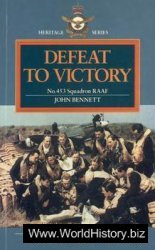The Goddess Cerridwen (whose name means Cauldron of Wisdom) lived on the isle of the Sidhe, known as The Land Beneath the Waves. On this island, she bore a son and named him Morfran because he resembled a raven. She worried because he was so ugly, so she decided to gift the son with her magical powers to make his life easier. She began to prepare the Cauldron of the Deep, the cauldron known as Aven. Only three drops from it would provide foresight and magical power for a lifetime.
She poured into it the waters of inspiration and prophecy. Carefully observing the orbits of the sun, moon, and every single star, she added each herb and the foam of the ocean, all at the proper times of the sky’s cycle. The waters simmered with the scents of vervain, wort, and cress. Nine druids of the Isle of Sein breathed on the cauldron with their holy breath. Cerridwen found a blind old man to stoke the fire, and a lad named Gwion to stir the cauldron’s precious elixir. It seethed for a year and a day.
As the potion neared its potency, Cerridwen sank into exhausted sleep. Beside her, Gwion kept stirring. Three precious droplets of the boiling brew splashed on his hand, and, instinctively, he licked them off. The poisonous remains of the water split the sides of the cauldron asunder and poured out upon the ground.
The thundering crack of the cauldron woke Cerridwen from her sleep. Using his new powers, Gwion transformed into a hare and fled. Cerridwen took the form of a greyhound and gave chase. She had almost caught up with him when they came to a river and he dove in, as a fish. She became an otter and still pursued him. He took flight as a sparrow, but she chased him as a hawk.
At last, he became a grain in a vast pile of wheat. Cerridwen transformed into a black-crested hen. And peck, peck, peck, she swallowed him.
Cerridwen thought she had ended matters, but the tiny grain of Gwion took root in her womb and began to grow. When she discovered she was pregnant, she swore she’d destroy the child as soon as it was born. However, on the day of his birth, she relented, hesitating to harm the newborn child. At last, she placed him in a leather sack and threw him into the river.
Floating toward Aberystwyth, the infant drifted to the weir of Gwyddno Garanhir, whose son Elffin discovered him on Calan Mai (May Day). “Dyma dal iesin!” (what a beautiful forehead), the boy exclaimed. So the child was named Taliesin. He became a great poet, and eventually, according to many tales, became Merlin of King Arthur’s court.1
Like Athena with her owl, or Isis with her throne, Cerridwen always appears with her regenerative cauldron, symbolic of the holy, life-giving womb. Here is the source of Taliesin’s poetry, his endless creativity, the shape-shifting powers of Merlin. He usurps the goddess’s feminine generative powers, tricking her into providing his shape-shifting magic, to birthing him, to setting him on the waves of the unconscious for his first journey.
He is the son of the goddess and dwells in the divine land, but he is also a culture-hero stealing from the divine land. Perhaps the myths reflect the encroachment of the cult of a god on that of a goddess, his worshippers regarding him as her son, her worshippers reflecting their hostility to the new god in a myth of her enmity to him.2
The powers he steals from her are feminine in nature: voice, craft, water, wisdom. Thus Cerridwen has double cause for rage as Gwion appropriates these skills, like Zeus giving birth to Athena, or Coyote stealing magic from his mother. “Her anger at Gwion may point to some form of the Celtic myth of the theft of the elements of culture from the gods’ land. But the cauldron was first of all associated with a fertility cult, and Cerridwen must therefore once have been a goddess of fertility, who, like Brigit, was later worshipped by bards.”3
According to feminist Adrienne Rich, women were the pottery-makers in prehistoric times, guarding their skills jealously from the men. She suggests the theory that
The woman potter molded, not simply vessels, but images of herself, the vessel of life, the transformer of blood into life and milk — that in so doing she was experiencing, celebrating and giving concrete form to her experience as a creative being possessed of indispensable powers. Without her biological endowment the child — the future and sustainer of the tribe — could not be born; without her invention and skill the pot or vessel — the most sacred of handmade objects — would not exist.4
Far from passive, the pot is transformative, representing the generative power of the enclosing, encircling woman. Like her womb, the goddess uses the cauldron to bring new life to the tribe and sustain it, linking crafts with the deepest biological mysteries.
Cerridwen was not only mother of birth, but also of death and transformation. In another legend, she offers Bran the Blessed her magical cauldron, which can resurrect the dead warriors placed inside it. This Cauldron of Regeneration, womb of the death mother, was one of the most famous treasures of Celtic myth.
Bran later was transmogrified into the Fisher King of Grail legend, with the Cauldron of Cerridwen recast as the Holy Grail. The cup, as a universal symbol of the mother-element, water, reflects the womb-vessel, and later, the chalice of resurrection, “the female-symbolic bowl of life-giving blood.”5 As for its feminine characteristics, the Grail dispenses both material food and spiritual solace. It preserves youth and maintains life. It heals knights wounded in battle. It radiates light and a sweet fragrance; it rejoices the troubled heart. In all these ways it is a source of solace and spirituality, elevating man above the animal and toward the divine. It is the guiding symbol, the anima, for which man quests.6




 World History
World History









